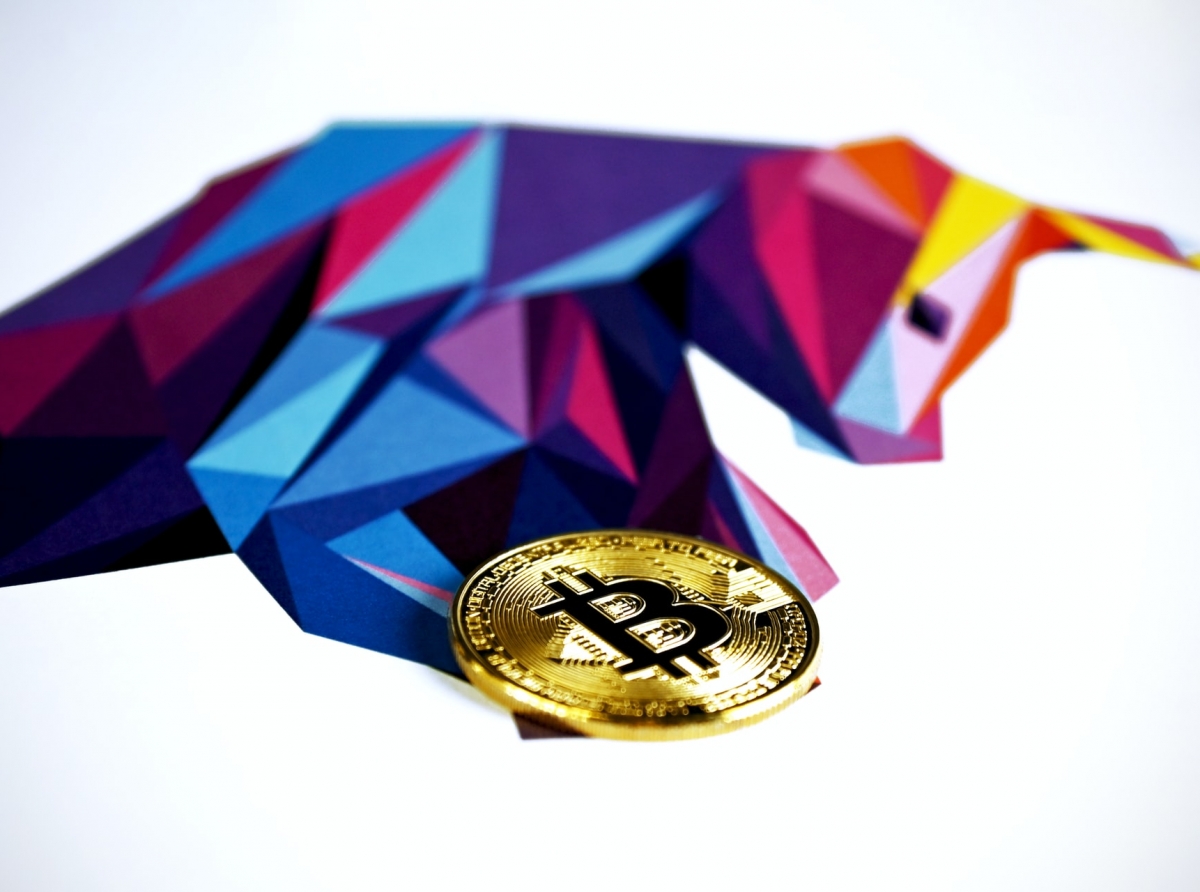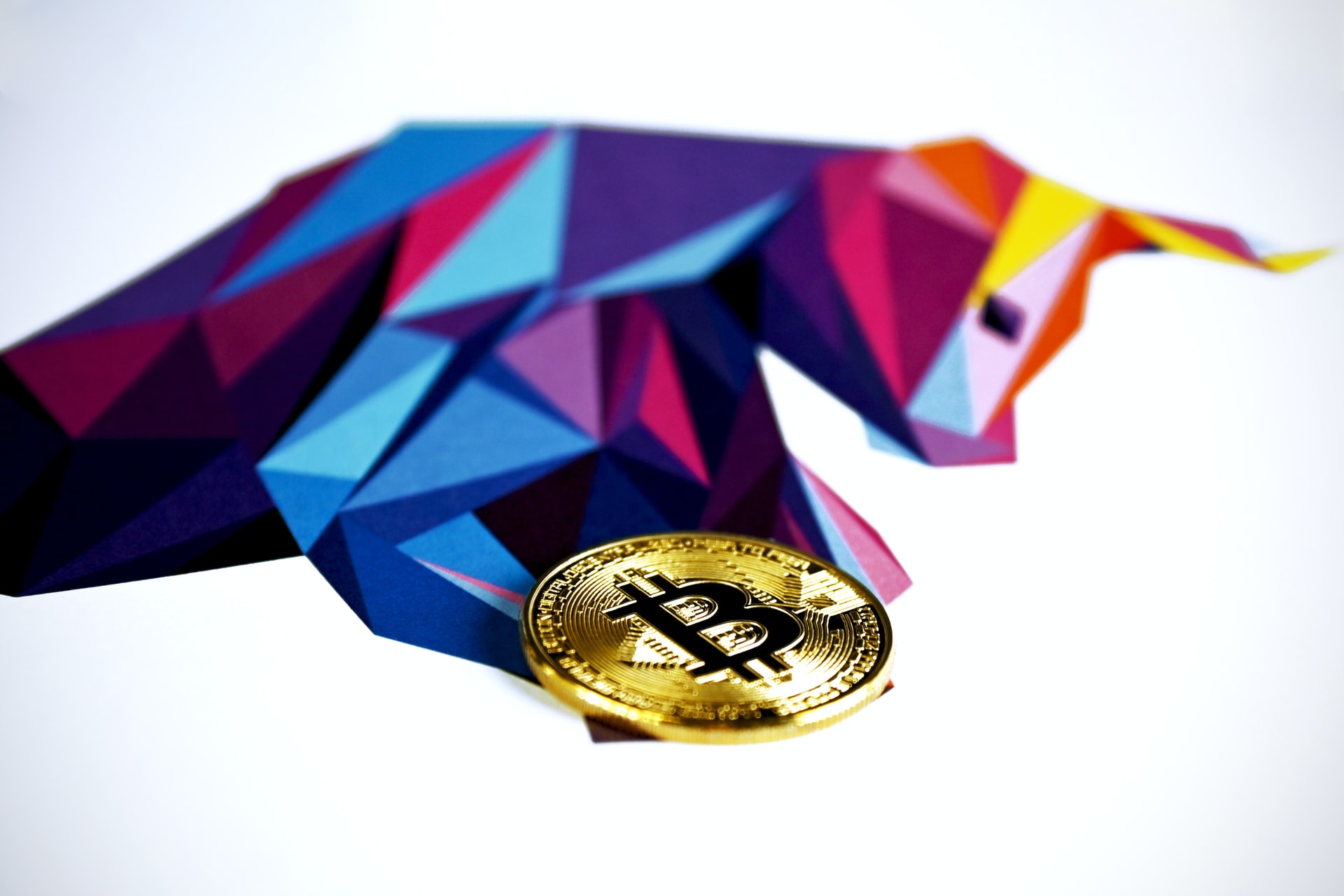How crypto trading differs from trading in other financial markets

Any markets are subject to the same laws: cyclicality, exposure to fundamental factors, etc. But the nature of financial markets may differ.
Each of them has its own characteristics that must be taken into account in trading. Based on this, traders develop their strategies and methods for analyzing markets, as well as principles of risk management.
In this article, you will learn how crypto trading differs from other types of trading.
We will look at the factors to consider and what to look out for when working in the cryptocurrency market.
Features of the cryptocurrency market
The cryptocurrency market is the youngest in comparison with traditional markets such as stock, commodity and foreign exchange, which have existed for more than a hundred years.
The cryptocurrency market is just over 10 years old and is just at the beginning of its journey. If you look at the liquidity of the market, then it is significantly lower than that of others. For comparison, only the daily turnover of the foreign exchange market in 2019 exceeded $ 6.6 trillion US dollars, and the turnover of the stock market exceeds $ 80 trillion, while the capitalization of cryptocurrencies does not exceed $ 340 billion, which is 200 times less than the turnover of the stock market. market.
The smaller the capitalization, the easier it is to manipulate. In theory, it is enough to sell Bitcoin (BTC) for only $ 1 billion directly through the exchanges to crash the rate by more than 50%, which would be impossible in other markets due to the high liquidity. Let's consider the main characteristics by which the crypto market differs from others.
Each of them has its own characteristics that must be taken into account in trading. Based on this, traders develop their strategies and methods for analyzing markets, as well as principles of risk management.
In this article, you will learn how crypto trading differs from other types of trading.
We will look at the factors to consider and what to look out for when working in the cryptocurrency market.
Features of the cryptocurrency market
The cryptocurrency market is the youngest in comparison with traditional markets such as stock, commodity and foreign exchange, which have existed for more than a hundred years.
The cryptocurrency market is just over 10 years old and is just at the beginning of its journey. If you look at the liquidity of the market, then it is significantly lower than that of others. For comparison, only the daily turnover of the foreign exchange market in 2019 exceeded $ 6.6 trillion US dollars, and the turnover of the stock market exceeds $ 80 trillion, while the capitalization of cryptocurrencies does not exceed $ 340 billion, which is 200 times less than the turnover of the stock market. market.
The smaller the capitalization, the easier it is to manipulate. In theory, it is enough to sell Bitcoin (BTC) for only $ 1 billion directly through the exchanges to crash the rate by more than 50%, which would be impossible in other markets due to the high liquidity. Let's consider the main characteristics by which the crypto market differs from others.
Volatility
Cryptocurrencies are one of the most volatile assets. During the day, the asset rate can easily change by 100% in any direction. This is typical only for shares of companies with small capitalization, but on the crypto market, such situations happen much more often.
High volatility occurs in low liquid markets during times of high trading activity. This means that players with large capital make large purchases or sales, which can lead to a sharp change in cryptocurrency rates.
The high volatility of cryptocurrencies carries significant risks. Just imagine that your cryptocurrency portfolio can fall in price in half in just a few hours. But this is also the advantage of the crypto market, since it allows you to extract greater profitability if you follow risk management.
In just six days during the market crash in March 2020, bitcoin fell from $ 9206 to $ 3840, and its capitalization more than halved - from $ 162 billion to $ 75 billion. But the recovery took more time: the BTC rate for the first time exceeded $ 10,000 only in June 2020. However, thanks to the strong volatility that arose after the crash and the news background ahead of the Bitcoin halving, investors had plenty of opportunities to capitalize on price fluctuations.
Fundamental analysis
Like any other asset, cryptocurrencies are subject to external economic, political and social factors that put pressure on the market: economic collapses, crises, news background and much more. In this, the market is similar to other markets. There is even a correlation between the cryptocurrency and the stock market, but we'll talk about that later.
The market is influenced by fundamental factors, but the nature of these influences differs in many respects from the stock and foreign exchange markets. For example, US economic data will not have the same impact on bitcoin as it does on currencies and securities. And the cryptocurrency rate is unlikely to fall due to the deterioration in the financial performance of a large technology company such as Apple or Google.
But news about the onset of the global crisis can cause severe damage to both the cryptocurrency and stock markets. In addition, the crypto market has other fundamental factors that only affect it.
This drop was caused by the fact that many ICO projects were actively selling BTC and ETH, which were collected from investors as part of crowdsales. Many of these companies did not even fulfill their obligations to investors, but simply sold the collected cryptocurrencies, leaving their investors essentially with nothing. Many ICO tokens did not even go public.
A similar situation can now be observed in the DeFi market: investors massively block their ETH tokens, due to which its price has almost quadrupled since the beginning of the year. However, it is not hard to imagine what will happen when this bubble bursts and everything will happen again: the market will collapse, and the last investors who bought cryptocurrency “on the highs” will incur colossal losses. These factors need to be considered when investing in cryptocurrencies.
Another factor that can affect the price of cryptocurrencies is the release of large-scale blockchain updates and hard forks. As part of the hard fork, holders are credited with new cryptocurrencies if at the time of the snapshot there are coins of the original protocol on the user's wallet.
The most famous Bitcoin Cash (BCH) hard fork took place on August 1, 2017. The new cryptocurrency was credited to the bitcoin holders in a 1: 1 ratio. HShortly before the release date of the hard fork, the rate of the main cryptocurrency more than doubled - from $ 1900 to $ 2900. But after taking a snapshot on the blockchain and charging Bitcoin Cash, the BTC rate fell sharply to $ 2,600 - this also needs to be taken into account.
Cryptocurrencies are one of the most volatile assets. During the day, the asset rate can easily change by 100% in any direction. This is typical only for shares of companies with small capitalization, but on the crypto market, such situations happen much more often.
High volatility occurs in low liquid markets during times of high trading activity. This means that players with large capital make large purchases or sales, which can lead to a sharp change in cryptocurrency rates.
The high volatility of cryptocurrencies carries significant risks. Just imagine that your cryptocurrency portfolio can fall in price in half in just a few hours. But this is also the advantage of the crypto market, since it allows you to extract greater profitability if you follow risk management.
In just six days during the market crash in March 2020, bitcoin fell from $ 9206 to $ 3840, and its capitalization more than halved - from $ 162 billion to $ 75 billion. But the recovery took more time: the BTC rate for the first time exceeded $ 10,000 only in June 2020. However, thanks to the strong volatility that arose after the crash and the news background ahead of the Bitcoin halving, investors had plenty of opportunities to capitalize on price fluctuations.
Fundamental analysis
Like any other asset, cryptocurrencies are subject to external economic, political and social factors that put pressure on the market: economic collapses, crises, news background and much more. In this, the market is similar to other markets. There is even a correlation between the cryptocurrency and the stock market, but we'll talk about that later.
The market is influenced by fundamental factors, but the nature of these influences differs in many respects from the stock and foreign exchange markets. For example, US economic data will not have the same impact on bitcoin as it does on currencies and securities. And the cryptocurrency rate is unlikely to fall due to the deterioration in the financial performance of a large technology company such as Apple or Google.
But news about the onset of the global crisis can cause severe damage to both the cryptocurrency and stock markets. In addition, the crypto market has other fundamental factors that only affect it.
This drop was caused by the fact that many ICO projects were actively selling BTC and ETH, which were collected from investors as part of crowdsales. Many of these companies did not even fulfill their obligations to investors, but simply sold the collected cryptocurrencies, leaving their investors essentially with nothing. Many ICO tokens did not even go public.
A similar situation can now be observed in the DeFi market: investors massively block their ETH tokens, due to which its price has almost quadrupled since the beginning of the year. However, it is not hard to imagine what will happen when this bubble bursts and everything will happen again: the market will collapse, and the last investors who bought cryptocurrency “on the highs” will incur colossal losses. These factors need to be considered when investing in cryptocurrencies.
Another factor that can affect the price of cryptocurrencies is the release of large-scale blockchain updates and hard forks. As part of the hard fork, holders are credited with new cryptocurrencies if at the time of the snapshot there are coins of the original protocol on the user's wallet.
The most famous Bitcoin Cash (BCH) hard fork took place on August 1, 2017. The new cryptocurrency was credited to the bitcoin holders in a 1: 1 ratio. HShortly before the release date of the hard fork, the rate of the main cryptocurrency more than doubled - from $ 1900 to $ 2900. But after taking a snapshot on the blockchain and charging Bitcoin Cash, the BTC rate fell sharply to $ 2,600 - this also needs to be taken into account.

How crypto trading differs from trading in other financial markets
Correlation
For a long time, it was believed that cryptocurrencies were independent of other assets, which made it relatively sovereign. However, this happened because the bulk of the players were few crypto enthusiasts, and the cryptocurrency was not widespread enough throughout the world. With the formation of the crypto market and the influx of institutional investors, the picture changed: the correlation between the traditional and the cryptocurrency market began to be observed more and more clearly.
In the summer of 2019, amid the escalating trade war between the United States and China, an inverse correlation was observed. Due to tense trade relations and mutual sanctions, investors began to sell securities and began to seek refuge in other assets such as gold and bitcoin.
Bitcoin resembles gold in many ways: its stock is limited, it is not related to the financial performance of a particular company or the economy of a particular country. It is not for nothing that Bitcoin was proclaimed "digital gold". Like gold, investors have used cryptocurrency to hedge market risks.
While the S&P 500 was falling in value, bitcoin began to rally as investors saw it as an alternative to protect their assets. Currencies also turned out to be volatile during this period, so investors turned to defensive assets such as gold and bitcoin.
The correlation began to show strongest in March 2020 after the markets collapsed due to the coronavirus crisis. Then the correlation coefficient between Bitcoin and the S & P500 peaked at 0.92 out of 1. This means that the cryptocurrency rate actually followed the price movement of the stock index.
For a long time, it was believed that cryptocurrencies were independent of other assets, which made it relatively sovereign. However, this happened because the bulk of the players were few crypto enthusiasts, and the cryptocurrency was not widespread enough throughout the world. With the formation of the crypto market and the influx of institutional investors, the picture changed: the correlation between the traditional and the cryptocurrency market began to be observed more and more clearly.
In the summer of 2019, amid the escalating trade war between the United States and China, an inverse correlation was observed. Due to tense trade relations and mutual sanctions, investors began to sell securities and began to seek refuge in other assets such as gold and bitcoin.
Bitcoin resembles gold in many ways: its stock is limited, it is not related to the financial performance of a particular company or the economy of a particular country. It is not for nothing that Bitcoin was proclaimed "digital gold". Like gold, investors have used cryptocurrency to hedge market risks.
While the S&P 500 was falling in value, bitcoin began to rally as investors saw it as an alternative to protect their assets. Currencies also turned out to be volatile during this period, so investors turned to defensive assets such as gold and bitcoin.
The correlation began to show strongest in March 2020 after the markets collapsed due to the coronavirus crisis. Then the correlation coefficient between Bitcoin and the S & P500 peaked at 0.92 out of 1. This means that the cryptocurrency rate actually followed the price movement of the stock index.
Ecosystem
The differences lie in technical aspects. Forex and stock market brokers have been around for a long time, have proven themselves well, and are designed for large trading volumes in excess of billions of dollars.
On cryptocurrency exchanges, delays and slippage of orders are often observed. This means that with large bulk purchases and sales, the servers of the exchanges can slow down, which will not allow selling the cryptocurrency at the market price.
This can lead to losses, as well as the fact that the trader will miss out on potential profits during large purchases. In addition, the market is not uncommon for fraud and theft, as the market is still poorly regulated by law.
However, in just the last year, large platforms such as Binance, Coinbase and Huobi have grown into large brokers and continue to develop their infrastructure to meet the needs of institutional investors who are increasingly interested in trading crypto assets.
The differences lie in technical aspects. Forex and stock market brokers have been around for a long time, have proven themselves well, and are designed for large trading volumes in excess of billions of dollars.
On cryptocurrency exchanges, delays and slippage of orders are often observed. This means that with large bulk purchases and sales, the servers of the exchanges can slow down, which will not allow selling the cryptocurrency at the market price.
This can lead to losses, as well as the fact that the trader will miss out on potential profits during large purchases. In addition, the market is not uncommon for fraud and theft, as the market is still poorly regulated by law.
However, in just the last year, large platforms such as Binance, Coinbase and Huobi have grown into large brokers and continue to develop their infrastructure to meet the needs of institutional investors who are increasingly interested in trading crypto assets.
Availability
While the cryptocurrency market is inherently decentralized and difficult to regulate, the stock market is tied to specific exchanges - liquidity providers. This means that the rules for accessing them are regulated by the financial institutions associated with them.
For the American stock exchange, this is, for example, the Commodity Futures Trading Commission (CFTC) or the United States Securities and Exchange Commission (SEC). And the London stock market is regulated by the UK Listing Authority (UKLA).
As a rule, only qualified investors can gain access to foreign markets, depending on the legislation of a particular country. The crypto market is not regulated according to such strict rules and is available to a wide range of users, although there are also limitations there.
In reality, you don't even need a passport to trade cryptocurrencies. In addition, there are DEX exchanges, such as, for example, Binance DEX, which operate in a decentralized manner and cannot even deny access to any user, since he trades funds from his own cryptocurrency wallet.
Also, there are crypto exchanges that offer trading in tokenized assets: stocks, gold, oil and others.
While the cryptocurrency market is inherently decentralized and difficult to regulate, the stock market is tied to specific exchanges - liquidity providers. This means that the rules for accessing them are regulated by the financial institutions associated with them.
For the American stock exchange, this is, for example, the Commodity Futures Trading Commission (CFTC) or the United States Securities and Exchange Commission (SEC). And the London stock market is regulated by the UK Listing Authority (UKLA).
As a rule, only qualified investors can gain access to foreign markets, depending on the legislation of a particular country. The crypto market is not regulated according to such strict rules and is available to a wide range of users, although there are also limitations there.
In reality, you don't even need a passport to trade cryptocurrencies. In addition, there are DEX exchanges, such as, for example, Binance DEX, which operate in a decentralized manner and cannot even deny access to any user, since he trades funds from his own cryptocurrency wallet.
Also, there are crypto exchanges that offer trading in tokenized assets: stocks, gold, oil and others.
However, legal crypto exchanges such as Binance or OKEx require verification to work with fiat currencies - this is a legal requirement in accordance with the KYC / AML policy. The same applies to the withdrawal of large amounts, since cybercriminals, using their freedom, can launder large amounts of money through cryptocurrency exchanges. In other cases, verification is usually not required.
Another distinctive feature of the cryptocurrency market is its 24/7 availability. The stock markets are only available 5 days a week and only for a limited time, determined by the territorial session.
Conclusion
There are similarities and differences between trading in traditional markets and crypto trading, as well as pros and cons.
Stock and foreign exchange markets are better protected in terms of legislation, but do not offer the same flexibility and asset diversity as the cryptocurrency market.
At the same time, cryptocurrency exchanges offer more freedom, but at the same time, the risks grow. For example, some countries legally limit leverage for unqualified investors because it is too risky for them.
Another distinctive feature of the cryptocurrency market is its 24/7 availability. The stock markets are only available 5 days a week and only for a limited time, determined by the territorial session.
Conclusion
There are similarities and differences between trading in traditional markets and crypto trading, as well as pros and cons.
Stock and foreign exchange markets are better protected in terms of legislation, but do not offer the same flexibility and asset diversity as the cryptocurrency market.
At the same time, cryptocurrency exchanges offer more freedom, but at the same time, the risks grow. For example, some countries legally limit leverage for unqualified investors because it is too risky for them.














Report
My comments